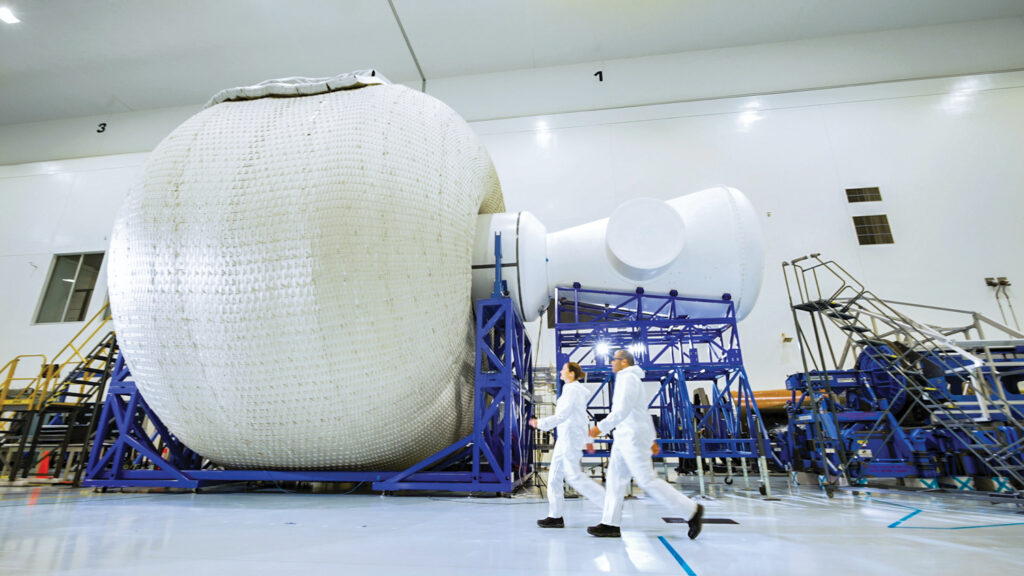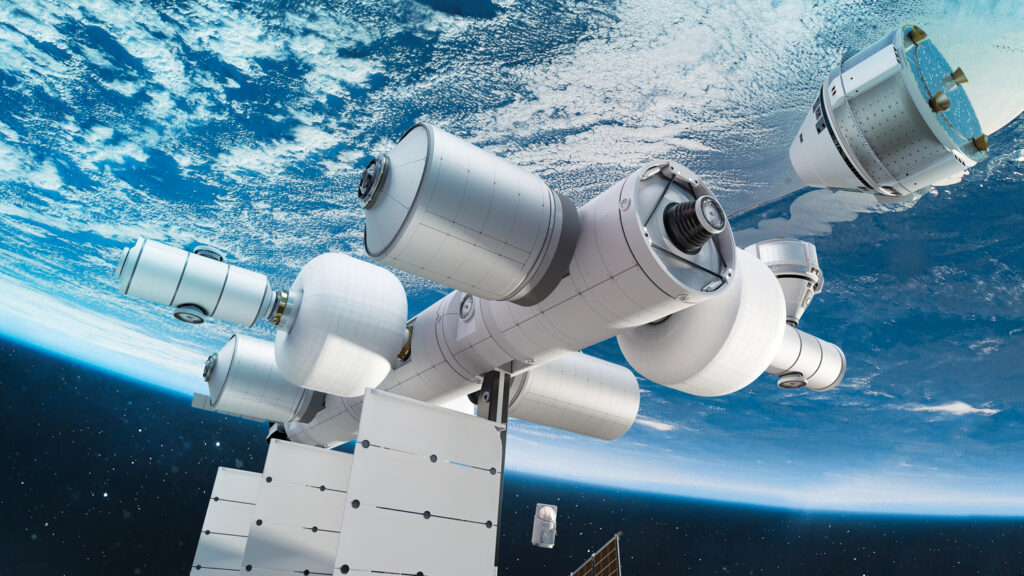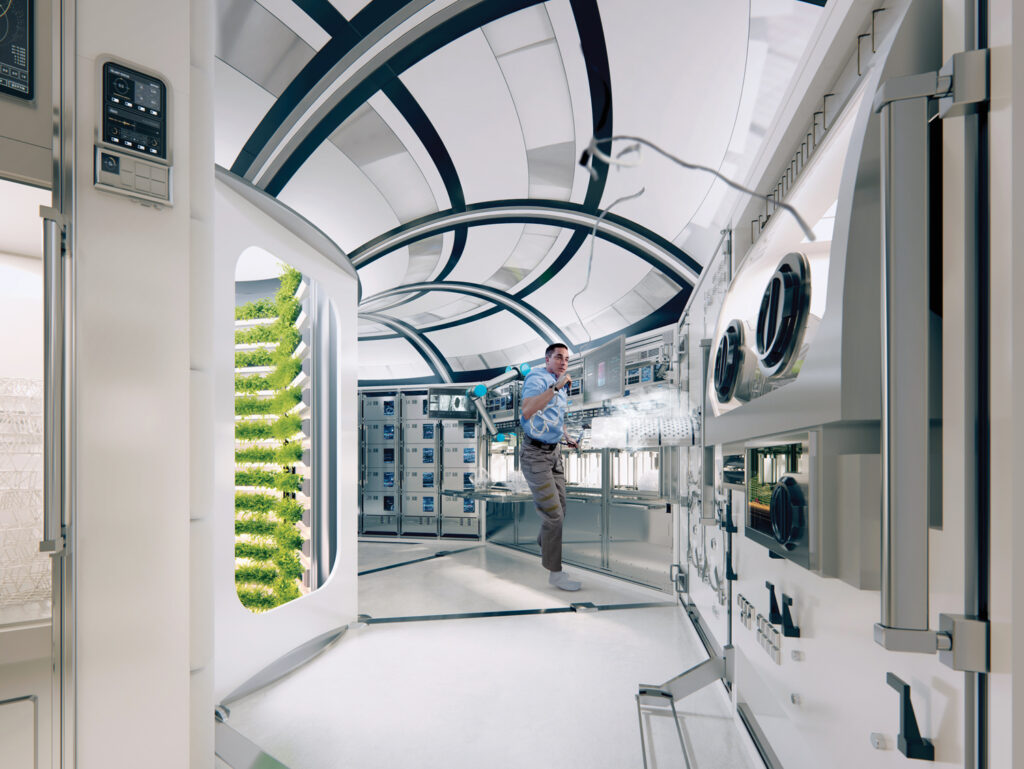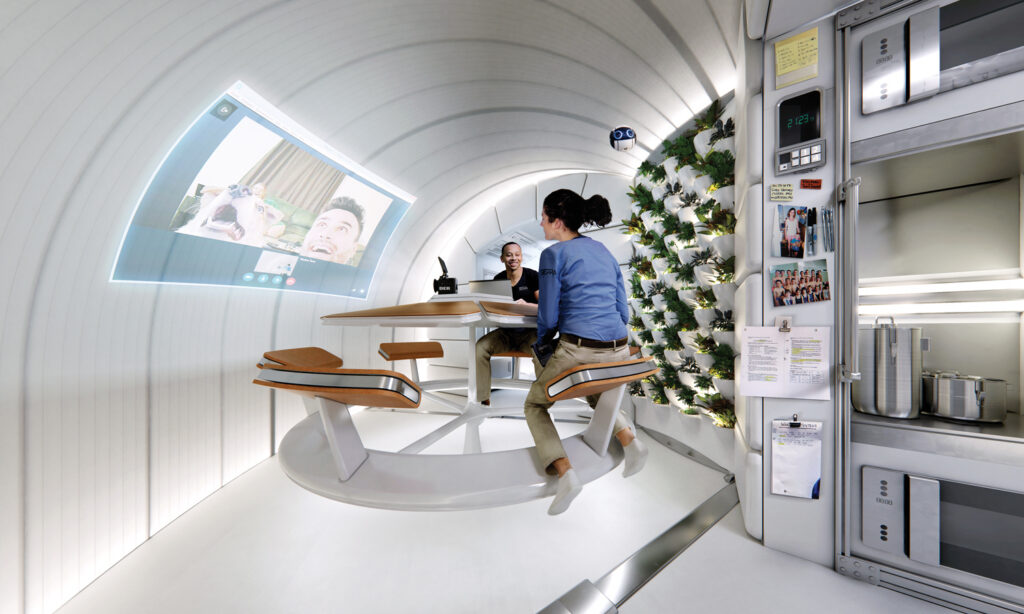
Inflatable habitats are not only under development for the moon but also low Earth orbit (LEO). Sierra Space Corp. and Blue Origin are two of the organizations involved with the Orbital Reef, the first commercial space station. The goal is having it operational before the end of the decade because the International Space Station (ISS) is scheduled to be decommissioned in 2031. Partnering with Sierra Space on the inflatable habitats portion of the structure is ILC Dover, the longtime maker of space-traveling soft goods such as space suits (since the Apollo missions) and airbags that brought rovers to the surface of Mars.
The Large Inflatable Flexible Environment (LIFE™) habitat is 27 feet in diameter, with 300 cubic meters (nearly 10,600 cubic feet) of space. It’s designed to have three floors for research, work and living areas and to optimally house a crew of six. It will have one-third of the pressurized volume of the ISS in its first launch. Concept images of the Orbital Reef show three inflatable habitats as a part of the station.

The fabrics used include Vectran®, which is spun from a liquid crystal polymer and becomes a rigid structure when pressurized. The modules also will have a multilayer shield to protect the habitat from micrometeroids and radiation and an inner-layer bladder made of urethane to keep the air inside the habitat. Its walls are a couple of feet thick.
Testing the LIFE habitat, which began with one-third scale prototypes, was expected to progress to the full-scale model in October. That test will be an ultimate burst pressure test, and the habitat used will have two blanking plates installed to demonstrate where windows will be. The first test involving window stand-ins was performed in August on the one-third scale model to show how the rigid structure and fabric interact.

“[A failure test is] how you have to get the data point,” says James Kirwan, program manager for space inflatables for ILC Dover.
Being an inflatable means the habitat will be relatively compact and lightweight for shipping to its destination, as it will inflate upon arrival. Everything that needs to be in the structure will already be there, packed around a 10-foot-diameter core. “It’s an exercise in origami,” Kirwan says.
Work with a full-size prototype began in 2019, and design improvements since then have been incorporated into the full-size version created for the October failure testing. Its manufacture took three months for a crew of 15–30 working on it full time. Some areas are even hand-stitched.

The 2019 prototype isn’t going to space itself but is rather the research vehicle to work out the best ways to construct, inflate and outfit the modules that will become part of Orbital Reef. The prototype has only two floors rather than three because the third will be upside down in space. “In space where there is no gravity, you can get away with a lot more usable volume,” Kirwan explains.
The hope is to have soft goods certified for flight by 2025.
Sierra Space and ILC Dover are also partnering on related space suits.
 TEXTILES.ORG
TEXTILES.ORG


